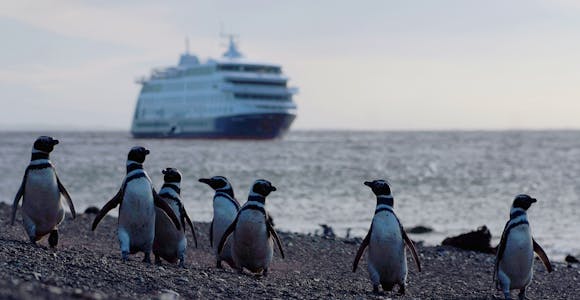
Wildlife Cruises
Both Patagonia’s Atlantic and Pacific coasts are teeming with wildlife, and the best way to put yourself in the action is by taking the water on an adventure cruise ship or a …
Discover MoreDeep roots in Patagonia: We are ex-guides, tour leaders, outdoor enthusiasts, & adventurers.
We’ve got our feet on the ground: Impartial advice, a bespoke service, and at no extra cost.
For the ends of the Earth: Sustainability is more than our carbon footprint (but we’re reducing that too).

Patagonia's waters are home to four magnificent whale species: orcas, humpbacks, southern rights, and the elusive blue whale. Join a dedicated whale-watching cruise or boat trip with specialist guides to protect fjords and bays in either Chile or Argentina to observe these spectacular animals in their natural habitat.
Click on the whales on the map to find out more
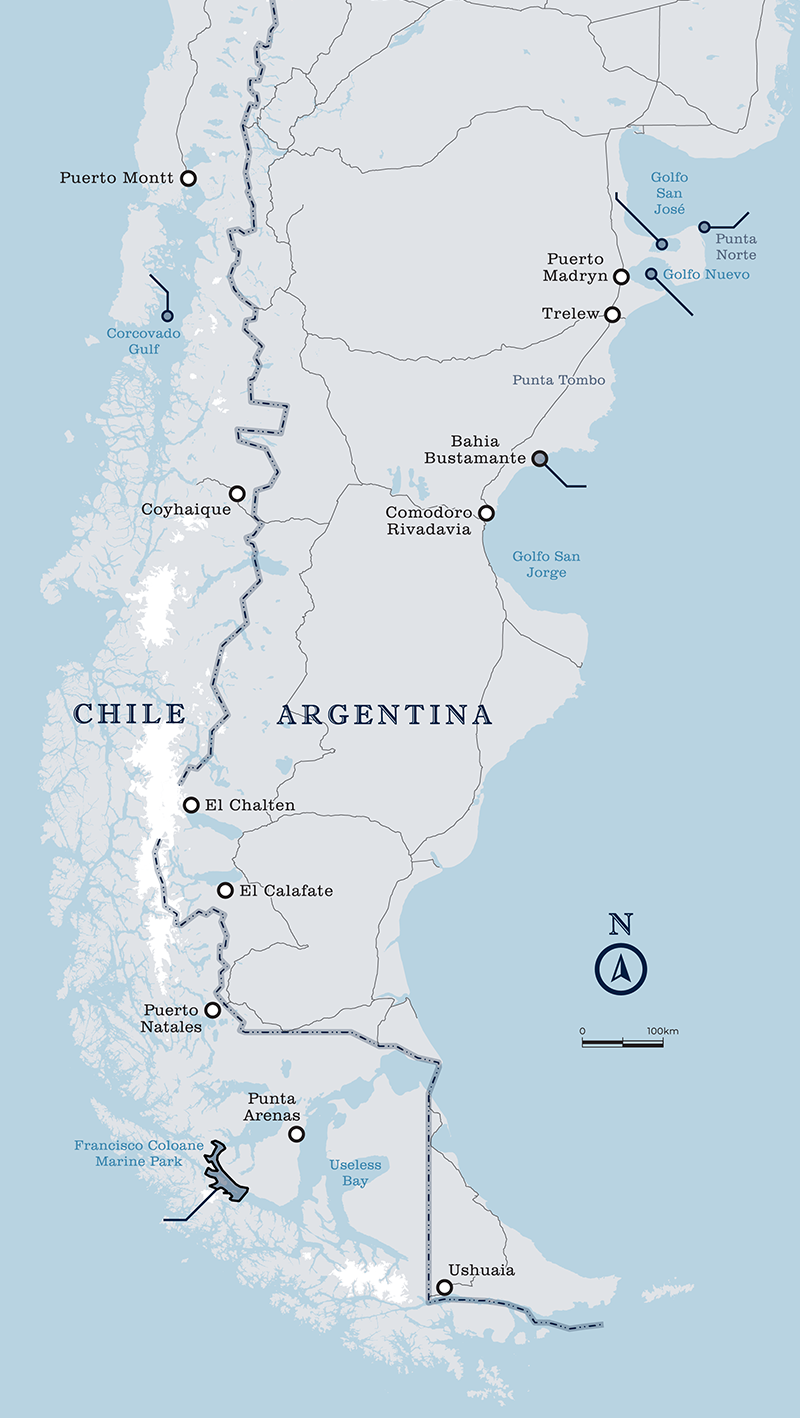
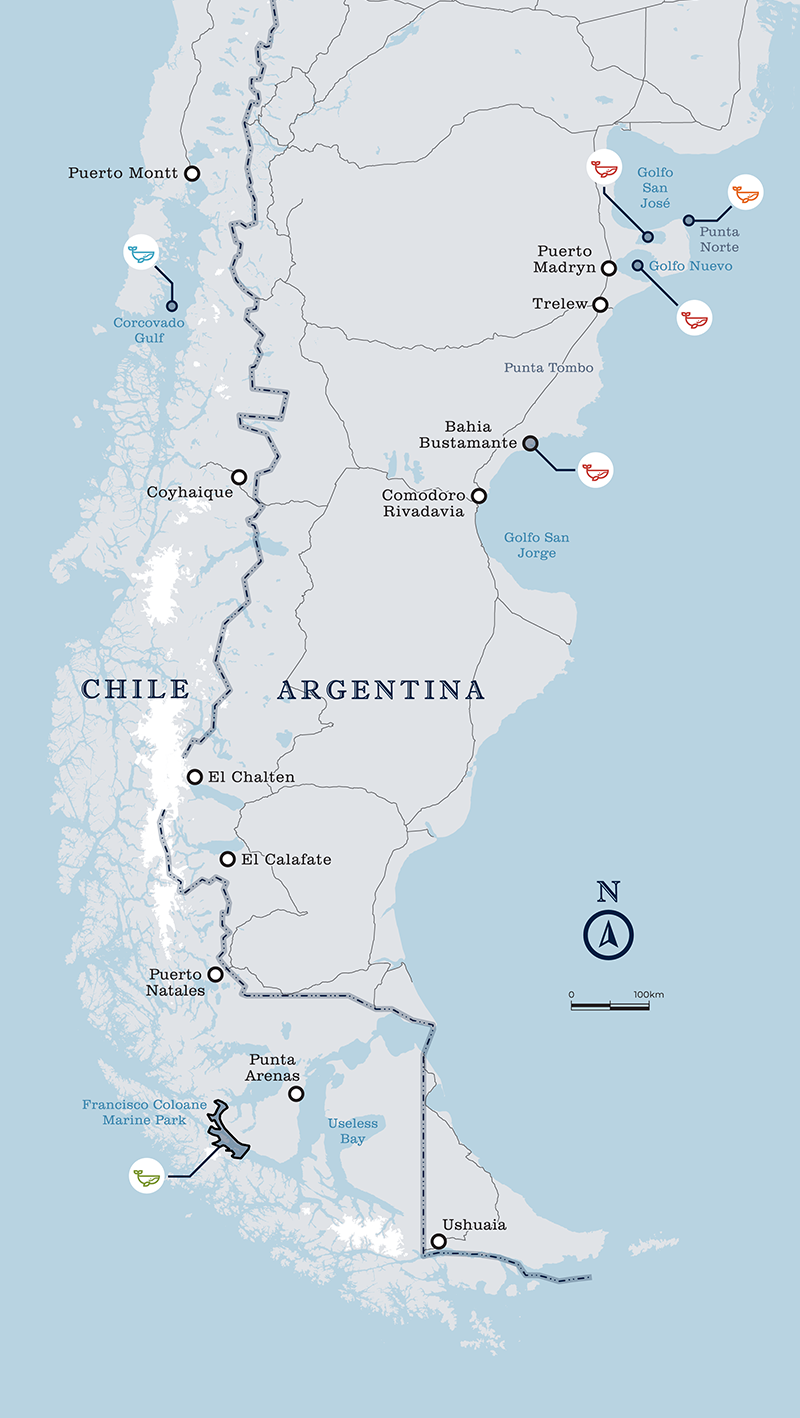
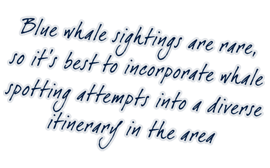
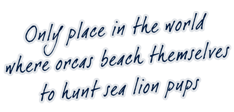
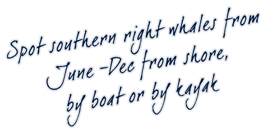
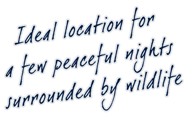


Blue whales are the largest animals known to have existed on the planet. They can be hard to spot as they only reveal part of the body at the surface. Chile’s waters host a globally important feeding ground for Pacific blue whales.
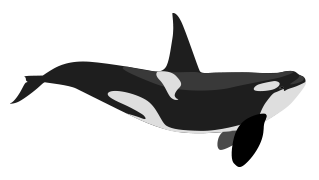
Orcas (or killer whales) are the largest member of the dolphin family. Found in all oceans, they live in complex matriarchal societies. In Peninsula Valdes they hunt by beaching themselves during the sea lion breeding season.

Southern right whales come to Peninsula Valdes to breed and give birth. They are recognisable by the large callosities on their heads. Highly active on the surface, look out for whale ‘sailing’ – elevating their flukes to hang in the wind.

Humpback whales gather in the Southern Chilean Fjords to feed during the summer. They are the most vocal of the great whales. Their huge flukes are like fingerprints, allowing individual whales to be recognised by scientists.

A southern right whale at Peninsula Valdes
Around one third of the southern hemisphere's southern right whales can be found in Patagonia's Atlantic waters. Every year between June and December around 2000 make the journey here from sub-Antarctic waters to mate and give birth in the shallow waters of Peninsula Valdes.
Southern right whales are easily recognisable among the great whales. They have large callosities on their heads, particularly above their eyes and along their jawline, as well as a broad back with no dorsal fin. The whales are dark grey with occasional white patches on their undersides – a distinct genetic feature of the population here.
The whales are very active on the surface and often engage in a behaviour known as 'sailing', where they elevate their tail flukes to catch the wind. The exact reason for this is unknown, but the whales can remain in this position for some time. At other times the whales can be very curious towards boats and may approach whale-watching vessels.
The southern right whale population here was devastated by illegal Soviet whaling here in the 1960s. Their numbers are in recovery but unlike some whale species right whales are very slow breeders, so they remain a highly protected species.

A humpback whale breaches off the Chilean coastline
Humpback whales are one of the most iconic of the great whales. They are instantly marked out by their huge flippers, which can reach a third of their total body length. The whales measure up to 19m in length and are a dark grey with a white underside. The white on their flippers and particularly their flukes are distinct to each whale, a feature that has allows researchers (and local whale watching guides) to recognise individuals by sight.
Humpbacks are perhaps best known for their spectacular breaching displays and complex songs which can last for hours and which are not fully understood by biologists. One special behaviour is feeding in groups by creating 'bubble nets' from below to concentrate shoals of small fish to be eaten in a single gulp.
The waters of the southern Chilean Fjords are a particularly rich feeding ground for humpbacks, particularly around Francisco Coloane Marine Park in Magellanes. Humpbacks here no longer migrate all the way to Antartica to feed, but stop here during the austral summer to feed, before migrating north to breed in tropical Pacific waters. The numbers of humpbacks here make this one of the best places in South America for whale watching.

Blue whales are the largest animal species ever known to have existed. They are a mottled blue/grey in colour with long, slender bodies, a prominent ridge running from the blowhole to the upper lip, and a vanishingly small dorsal fin. Fully grown, a blue whale can reach up to 30 metres in length and an incredible180 tonnes in weight. They tend to live alone, seldom forming close knit groups like other baleen whale species.
During the height of industrial whaling, blue whales were regarded as especially valuable for their oil and were hunted almost to extinction as a result. Their numbers today are growing, but they remain scarce, which makes seeing them a particularly exciting prospect.
Around 20 years ago Chilean biologists discovered a sheltered, food-rich nursery area off Chiloé island where blue whales gather between January and April. The blue whales here make up a distinct genetic population with their own unique whale songs.
Wildlife cruises offer the chance to see blue whales here, but they are challenging to observe as they often only reveal a small portion of their backs out of the water, and remain submerged for long periods of time.

Orca patrolling the beaches of Peninsula Valdes
Orcas, also known as killer whales, are the largest members of the dolphin family. They're instantly recognisable from their enormous blade-like dorsal fin, which can stand up to 2m in height (the animals themselves measure around 9m, and weigh up to a hefty 10 tonnes). Orcas are black with a white underside stretching from their lower to abdomen and elegant white oval patterns along their flank and behind the eye.
Orcas live in large matriarchal family groups. They are found in every ocean but tend to prefer coastal areas. Different populations have different diets: specialising in fish in some areas and seals in another. Sophisticated group hunting techniques are taught from one generation to another.
The most notable orcas in Patagonia are those around Peninsula Valdes, who have learned to beach themselves on certain steeply shelving beaches during the high tide to catch sea lion pups who are just starting to take to the water. Orcas can also sometimes be seen in the southern Chilean fjords.
Another notable behaviour to look when watching orcas is spy-hopping, when the animal holds its heads above the water to observe its surroundings – looking at observers on a boat as well as prey on the beach.

A humpback whale breaches off the Chilean coastline
Francisco Coloane Marine Park in the Southern Chilean Fjords region is considered one of the great success stories of whale conservation. Humpback whales are a common sight here: the area is so rich in food that the local population chooses to feed here in Strait of Magellan during the austral summer, rather than migrating all the way down to Antarctica.
Numbers of humpbacks have increased dramatically since the creation of the marine park. The area can only be accessed by boat, and visitors stay in a dedicated eco-camp and take cruises out on the waters with the actual whale researchers who have been studying the whales for years. Most people see large numbers of whales feeding and breaching; the whales are so well known that the guides can identify most of them individually.
Orcas are occasionally seen in these waters too, along with the very rare sei whale, but these should be considered lucky sightings. South American sea lions and Magellanic penguins are also found in the park, feeding among the underwater kelp forests that thrive in the rich waters of the strait.

Peninsula Valdes is a marine reserve on Argentina’s Patagonian coast that is world famous as a place to see southern right whales. The majestic creatures visit the area between June to December when they gather to breed and give birth in the calm waters here.
The calm waters of Golfo Nuevo and Golfo San Jose are the preferred places along Peninsula Valdes where the whales mate and their calves take their first breaths. August, September and October are generally considered the best months to see them – sightings are pretty much guaranteed during this period. You can see the whales on a day cruise from Puerto Pirámides or even straight from the beaches at Puerto Madryn and Playa Doradillo.
Orcas are also found in the waters of Peninsula Valdes. They are present year-round but use the most incredible hunting techniques when sea lion pups are present. The orcas beach themselves on the shore to pluck their prey straight from the surf. Beach hunting takes place during high tide in Caleta Valdes and Punta Delgada in September, October and November, and in Punta Norte in February, March and April.

The Corcovado Gulf lies off the southern coast of Chiloé island. In March 2023 the government of Chile designated it as Tic-Toc Golfo Corcovado Marine Protected Area because of its global importance as a feeding and breeding ground for blue whales.
Blue whales may be seen here from January through to April due to the food rich waters on Chilean northern Patagonia offering shelter for feeding and nursing young. Humpback whales may also be seen here during this time. The blue whale population that visits here is thought to be only a few hundred individuals. As a result (and despite the whale’s immense size), they can sometimes be a challenge to find. Wildlife cruises around the coast of Chiloé offer the best chance of seeing them but sightings are not guaranteed.
Due to the significance of the waters here, there is currently pressure on the Chilean government to bring in new restrictions on marine traffic through the gulf, such as bringing in a maximum cruising speed for ships to reduce the likelihood of accidental ship strikes, as well as increasing the number of marine protected areas along the coast.
Whale Watching in Patagonia trips scored 3.7/5 from 44 reviews
Peninsular Valdes is a truly special place and the marine life amazing! Read the full review
Travelled: October 2024
Cindy Stevens - USA
Whale watching was amazing!! We loved it a lot! Read the full review
Travelled: December 2018
Galina Polshakova - Russian Federation
The Whale Watching was incredible, we saw over 40 whales in just 3 days!
Travelled: March 2016
Eddie -
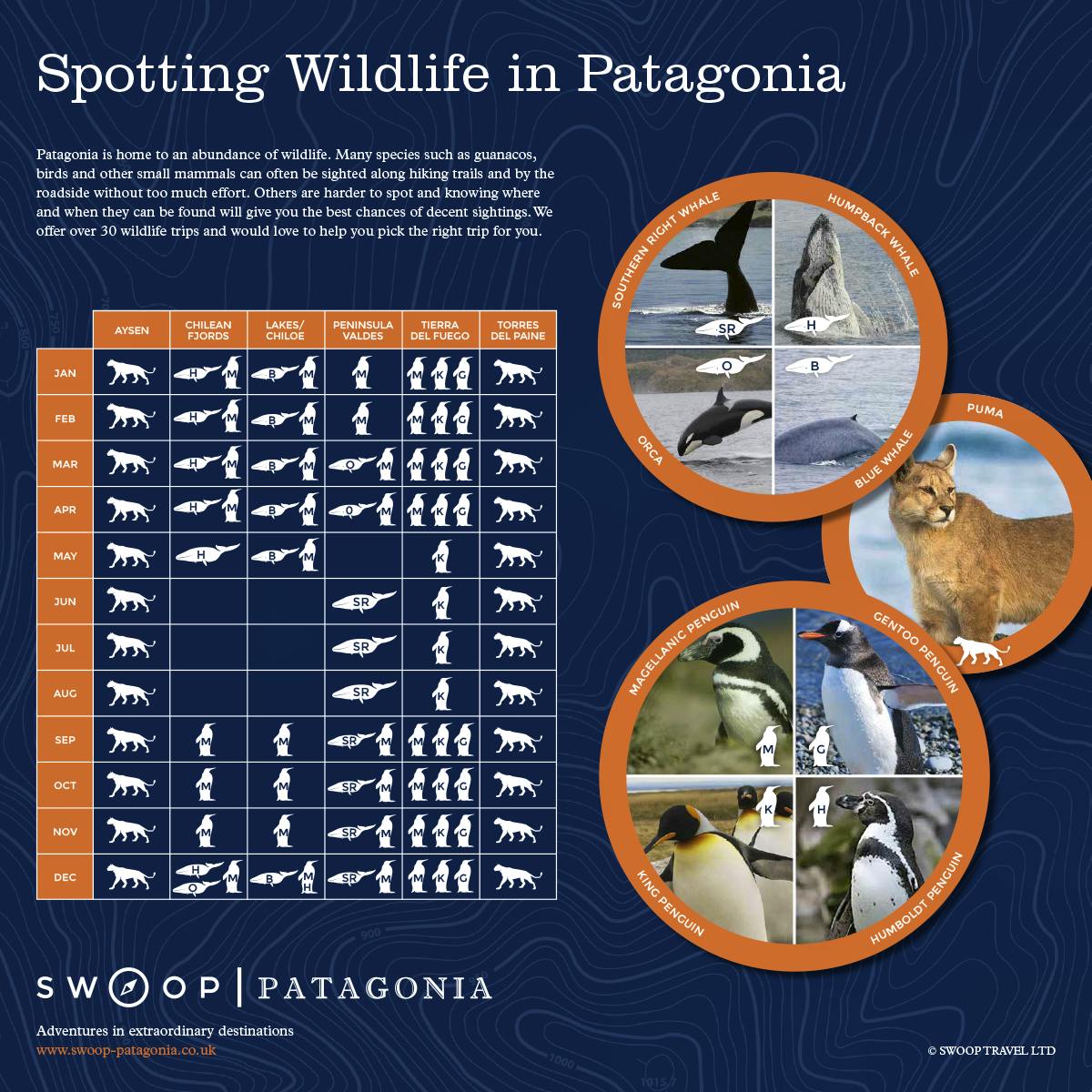

Both Patagonia’s Atlantic and Pacific coasts are teeming with wildlife, and the best way to put yourself in the action is by taking the water on an adventure cruise ship or a …
Discover More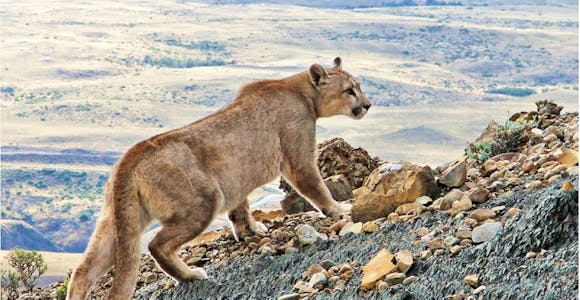
Patagonia is home to an array of amazing wildlife. We work with hand-picked local wildlife guides to help you experience the region's nature at its finest.
Discover More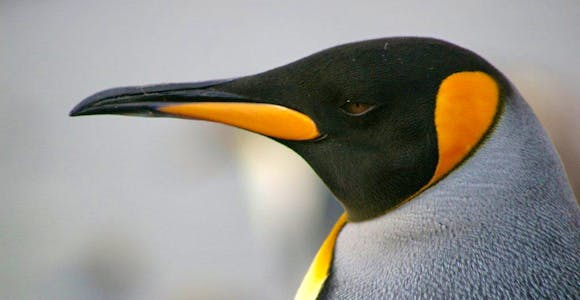
Patagonia is an incredible place to see penguins ('Pinguinos' in Spanish), and there is a surprising variety of species too! You'll find penguin reserves throughout Patagonia, …
Discover More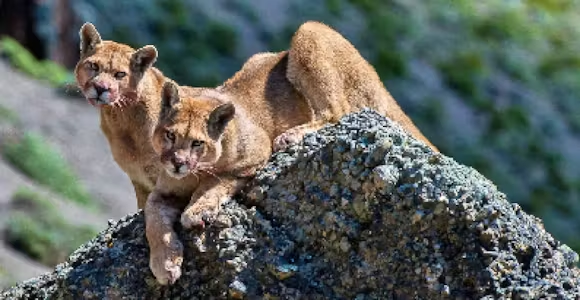
Torres del Paine is home to a growing population of the elusive puma. We work with responsible guides to give you great wildlife experiences while protecting the animals' habitat.
Discover MorePatagonia offers an array of unique adventures catering for all variety of activities. At Swoop we pride ourselves on being adventure specialists whether that adventure be kayaking, mountain biking, horse riding, birdwatching, puma tracking, fishing, climbing, mountaineering or rafting.
We'll spend some time listening to your aspirations, then discuss the kind of experience that might suit you.
Next we'll discuss the options, shortlist the best trips for you and present you our impartial recommendations.
We'll place a 24 hour hold on your preferred option - without obligation - whilst we talk through the details.
This website uses cookies to ensure you get the best experience on our website. Privacy policy